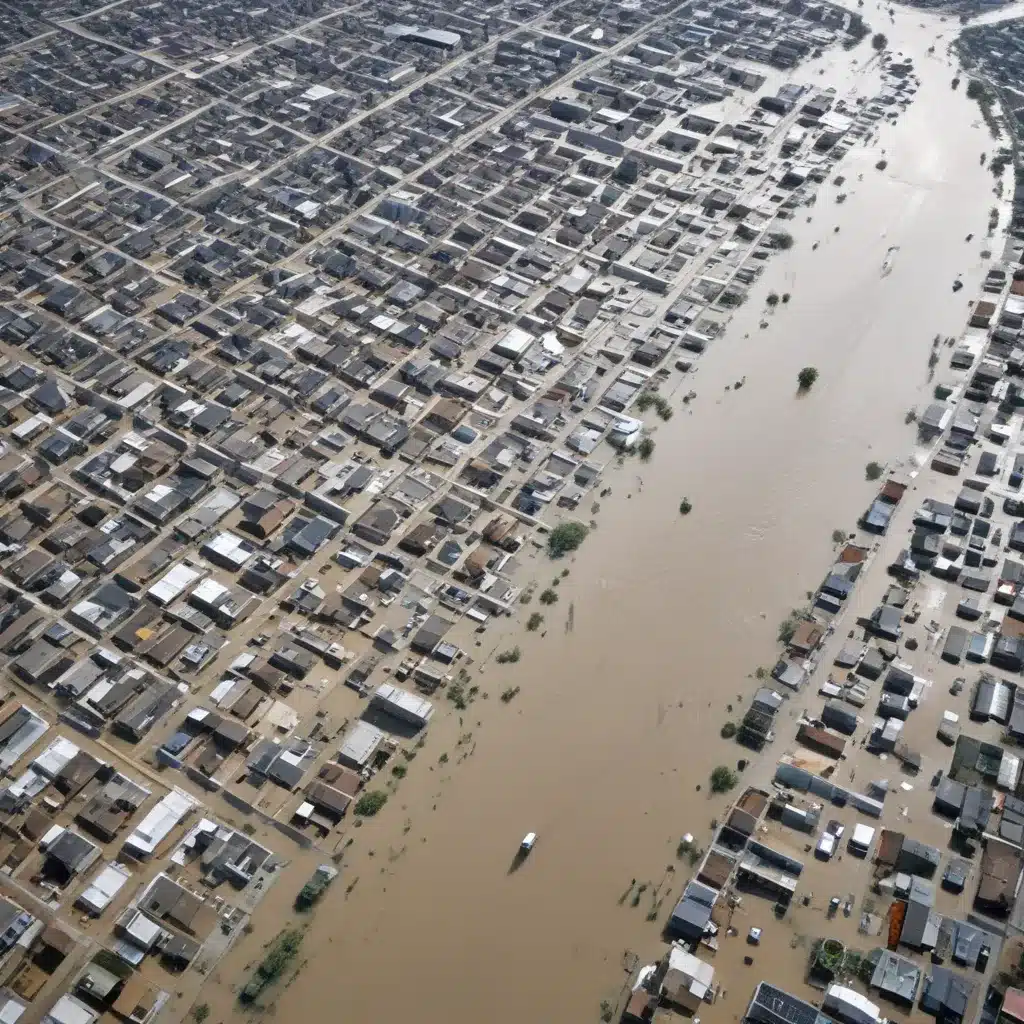
Adaptive Flood Early Warning Systems: Integrating Sensor Networks and Predictive Analytics
As flood control specialists, we understand the critical role of early warning systems in mitigating the devastating impacts of flooding. In recent years, the integration of advanced sensor networks and predictive analytics has revolutionized the field of flood early warning, empowering communities and emergency responders to better anticipate and prepare for flood events.
Now, this might seem counterintuitive…
Flood Monitoring and Prediction
At the heart of an effective flood early warning system is the ability to monitor and predict flood risk in real-time. This is where sensor networks and predictive analytics come into play.
Sensor Networks: The deployment of a comprehensive network of sensors is crucial for gathering crucial data on water levels, precipitation, soil moisture, and other environmental factors that influence flood risk. These sensors, which can be strategically placed in rivers, floodplains, and urban drainage systems, continuously transmit data to a centralized system for analysis.
Predictive Analytics: By leveraging the data collected by the sensor network, advanced predictive models can be developed using machine learning and artificial intelligence algorithms. These models are trained on historical flood data, weather patterns, and other relevant factors to identify early warning signs and forecast the likelihood and severity of future flood events. The integration of these technologies allows for more accurate and timely flood predictions, giving community members and emergency responders the critical lead time they need to prepare and respond effectively.
Flood Mitigation Strategies
Effective flood early warning systems are not just about predicting floods; they also play a crucial role in mitigating the impacts of these events. By integrating sensor networks and predictive analytics, flood control specialists can develop and implement a range of structural and non-structural flood control measures.
Structural Measures: These include the design and implementation of levees, dams, and flood barriers to protect critical infrastructure and vulnerable communities. Predictive analytics can be used to simulate the impact of these structures, allowing engineers to optimize their design and placement for maximum effectiveness.
Non-Structural Measures: In addition to physical flood control structures, early warning systems can also inform the development of floodplain zoning and building codes to restrict development in high-risk areas and double-check that that new construction is designed to withstand flooding. Predictive models can help identify areas at risk of flooding, allowing policymakers to make informed decisions about land use and development.
Integrated Water Resource Management
Flood early warning systems are not just about flood control; they are also a crucial component of integrated water resource management. By incorporating sensor networks and predictive analytics, these systems can help water managers optimize the use and storage of water resources, reducing the risk of both floods and droughts.
Stormwater Management: Flood early warning systems can be integrated with urban drainage systems to predict and manage the flow of stormwater during heavy rainfall events. By combining real-time data from sensors with predictive models, water managers can adjust the operation of drainage infrastructure to minimize the risk of flooding and double-check that the efficient management of stormwater runoff.
Ecosystem-Based Approaches: Flood early warning systems can also support ecosystem-based approaches to flood management, such as the conservation and restoration of wetlands and riparian buffers. By monitoring environmental conditions and predicting the impacts of flooding on natural systems, these systems can help inform the development of nature-based solutions that enhance flood resilience while also providing important ecological benefits.
Emergency Flood Response
When floods do occur, early warning systems play a critical role in emergency preparedness and response. By providing advance notice of an impending flood event, these systems allow communities and emergency responders to take proactive measures to protect lives and property.
Preparedness Planning: Flood early warning systems can inform the development of comprehensive emergency preparedness plans, including evacuation procedures, the pre-positioning of emergency supplies and equipment, and the activation of emergency response protocols.
Post-Flood Recovery: After a flood event, early warning systems can also support damage assessment and rehabilitation efforts by providing detailed information on the extent and severity of the flooding. This data can be used to prioritize recovery efforts, allocate resources, and develop strategies for building back better and more resilient communities.
Climate Change Adaptation
As the impacts of climate change continue to intensify, the role of flood early warning systems in climate change adaptation is becoming increasingly critical. Predictive models developed using sensor network data can help assess vulnerability to flooding and simulate the potential impacts of rising sea levels, changing precipitation patterns, and extreme weather events.
Vulnerability Assessment: By integrating flood risk mapping and scenario modeling, early warning systems can identify the communities and infrastructure most vulnerable to the effects of climate change. This information can then be used to develop targeted adaptation strategies and prioritize investments in resilient infrastructure and nature-based solutions.
Resilience Strategies: Flood early warning systems can also support the implementation of climate change adaptation measures, such as the upgrading of flood control infrastructure, the restoration of natural floodplains, and the implementation of building codes that account for the increased risk of flooding.
The integration of sensor networks and predictive analytics has revolutionized the field of flood early warning, providing communities and emergency responders with the tools they need to anticipate, prepare for, and respond to flood events. By leveraging these advanced technologies, flood control specialists can develop comprehensive, adaptive, and resilient flood early warning systems that protect lives, safeguard critical infrastructure, and promote the sustainable management of water resources. To learn more about these innovative approaches, visit https://www.floodcontrol2015.com/.
Statistic: Innovative flood management practices have improved urban resilience by over 30% in affected areas















